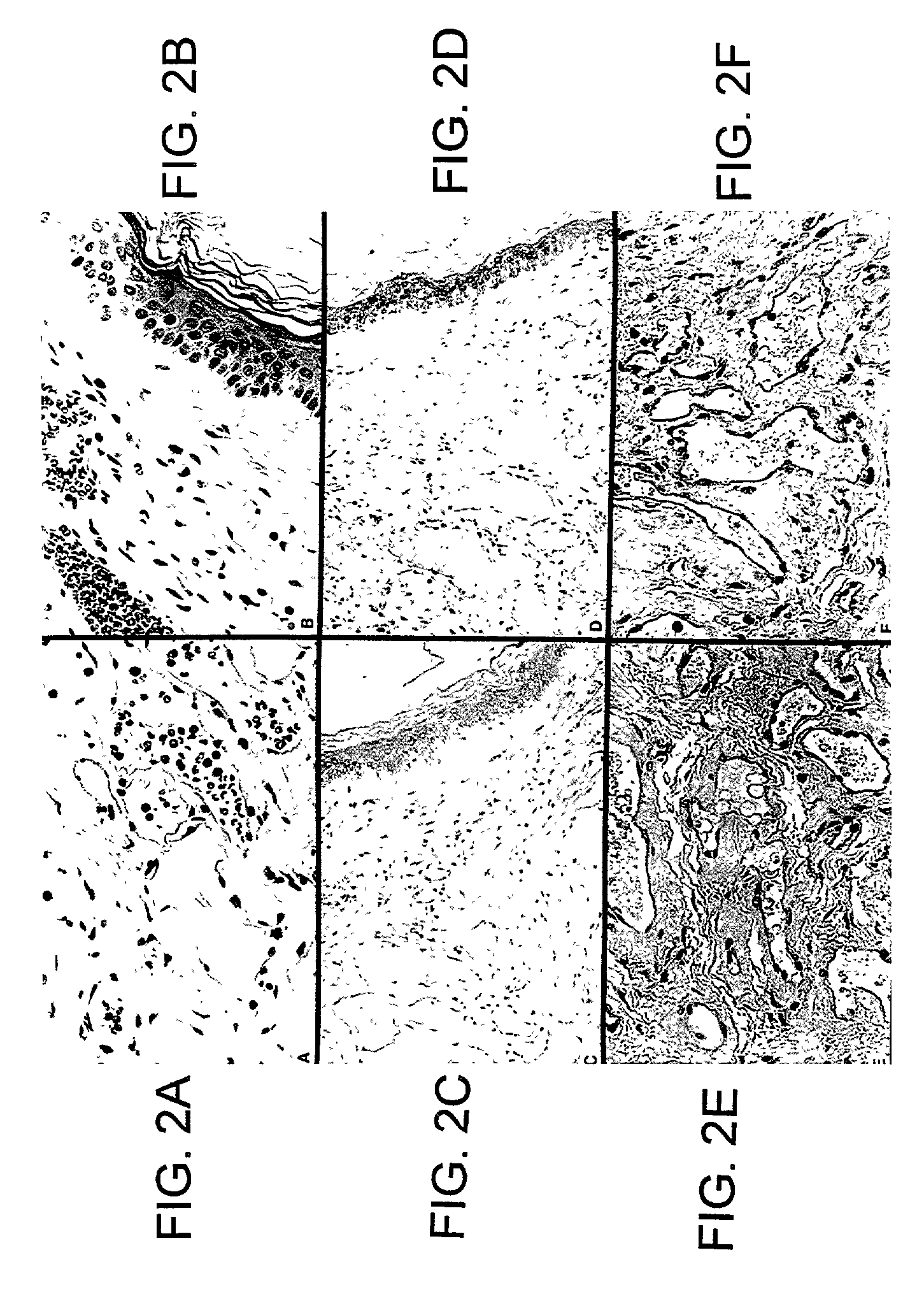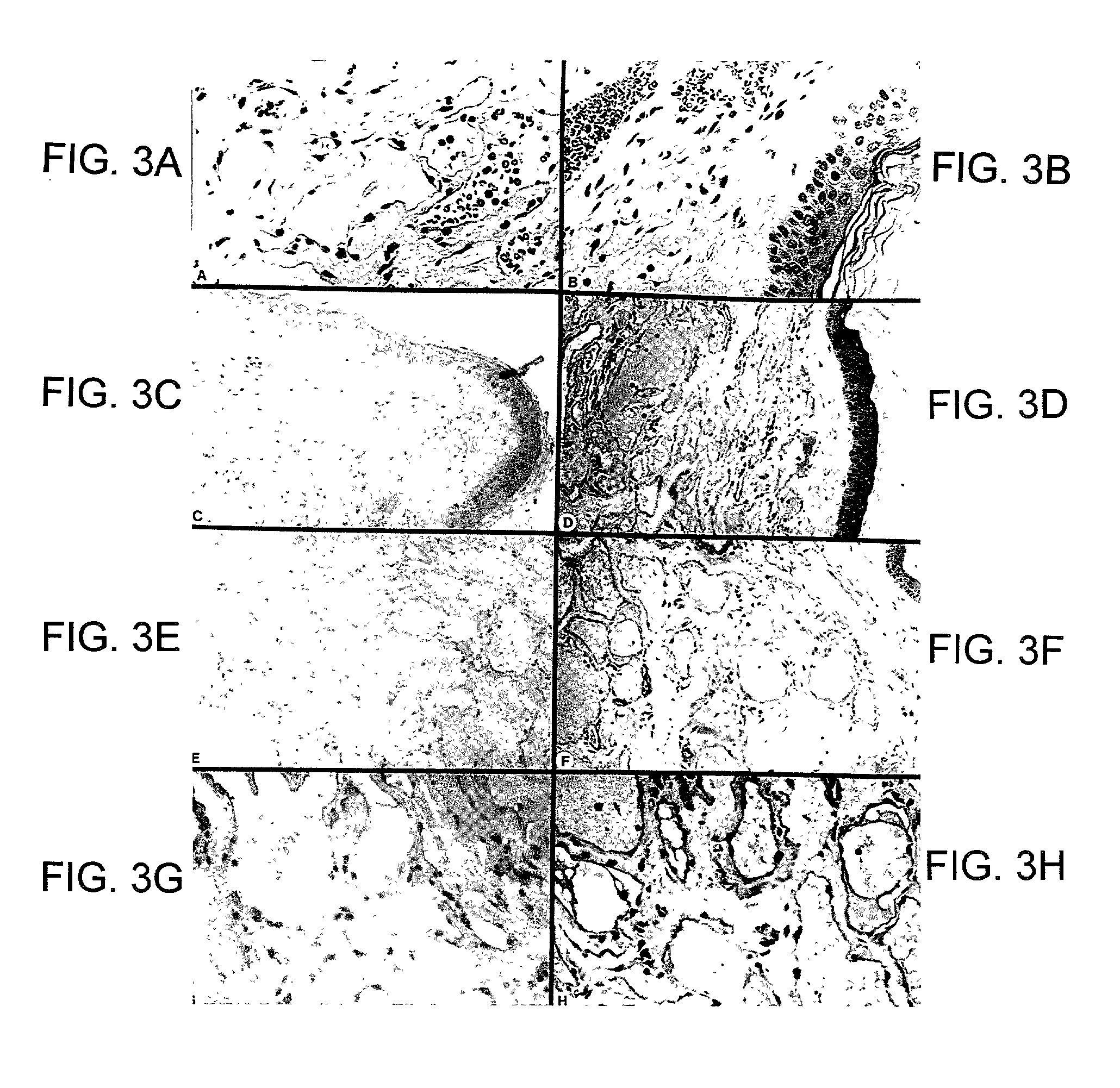Treatment of idiopathic pulmonary fibrosis using IP-10
a technology of idiopathic pulmonary fibrosis and ip-10, which is applied in the direction of peptides, drug compositions, angiogenin, etc., can solve the problems of not imparting neutrophil activation properties to these chemokines, significant lack of data concerning the angiogenic or angiostatic properties of cxc chemokines, and insufficient neutrophil activation data, etc. to achieve the effect of blocking neovascular
- Summary
- Abstract
- Description
- Claims
- Application Information
AI Technical Summary
Benefits of technology
Problems solved by technology
Method used
Image
Examples
example ii
IL-8 is Significantly Elevated in NSCLC
[0465] Since the growth of solid tumors shares many features with wound repair (Whalen, 1990; McKay and Leigh, 1991), and tumorigenesis and metastasis are dependent upon angiogenesis (Folkman, 1985; Bouck, 1990; Folkman and Klagsbrun, 1987; Folkman et al., 1989; Maiorana and Gullino, 1978; Herlyn et al., 1987; Weidner et al., 1991; Weidner et al., 1993; Macchiarini et al., 1992), the inventors characterized the angiogenic biology of CXC chemokines in the context of NSCLC.
[0466] The antigenic determination of the CXC chemokine content of normal lung and bronchogenic tumor tissue specimens was determined using samples obtained from consented individuals undergoing thoracotomy for suspected primary bronchogenic carcinoma in accordance with the University of Michigan I.R.B. approval. Samples of tumor, and normal lung distal to tumor, were homogenized in PBS upon recovery from the operating room. Specimens were then filtered through 0.45 micron Ster...
example iii
Tumor-Derived IL-8 Stimulates Angiogenesis-Associated Responses
[0471] To determine the relative contribution of IL-8 to the total angiogenic activity of NSCLC the inventors employed the following strategies. First, concentrated tissue homogenates from normal lung, adenocarcinoma, and squamous cell carcinomas, as well as tissue extracts from suspensions of a bronchoalveolar carcinoma cell line (A549), were normalized to TP and evaluated for endothelial cell chemotactic activity (Koch et al., 1992a). Results for tissue samples were expressed as percentage of chemotactic activity induced by a standard of 50 ng / ml recombinant human IL-8.
[0472] The endothelial cell chemotaxis assays were performed in 48-well, blind well chemotaxis chambers (Nucleopore Corp., Maryland) as previously described (Koch et al., 1986). Nucleopore chemotaxis membranes (5 micron pore size) were prepared by soaking them sequentially in 3% acetic acid overnight and for 2 hr. in 0.1 mg / ml gelatin. Membranes were rin...
example iv
[0479] Inhibition of IL-8 Attenuates Angiogenesis In Vivo
[0480] The inventors next evaluated the angiogenic signal mediated by tumor-derived IL-8 in an in vivo model of angiogenesis. The previously well-characterized corneal micropocket model in the rat was employed (Koch et al., 1991b; 1992a; Polverini et al., 1977). Briefly, 5 mg total protein of each specimen was combined with a equal volume of sterile Hydron casting solution, and 5 ml aliquots were pipetted onto the surface of 1 mm Teflon rods glued to the surface of a glass petri dish. Pellets were air-dried in a laminar flow hood (1 hour) and refrigerated overnight. Prior to implantation pellets were rehydrated with a drop of lactated ringers solution.
[0481] Animals were anesthetized with metofane and injected with sodium pentobarbital intraperitoneally. A retrobulbar injection of 0.1 ml of 2% lidocaine was made before intracorneal implantation of the Hydron pellet into a surgically created intracorneal pocket approximately 1....
PUM
| Property | Measurement | Unit |
|---|---|---|
| concentrations | aaaaa | aaaaa |
| concentrations | aaaaa | aaaaa |
| concentrations | aaaaa | aaaaa |
Abstract
Description
Claims
Application Information
 Login to View More
Login to View More - R&D
- Intellectual Property
- Life Sciences
- Materials
- Tech Scout
- Unparalleled Data Quality
- Higher Quality Content
- 60% Fewer Hallucinations
Browse by: Latest US Patents, China's latest patents, Technical Efficacy Thesaurus, Application Domain, Technology Topic, Popular Technical Reports.
© 2025 PatSnap. All rights reserved.Legal|Privacy policy|Modern Slavery Act Transparency Statement|Sitemap|About US| Contact US: help@patsnap.com



